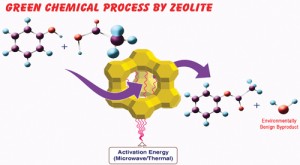The ability to visualise and manipulate materials at the nano-scale has changed the way we think about all topics in science, including catalysis. There has been substantial research into the production, application and mechanisms of nano-catalysts given the industrial, economic and environmental benefits they can bring. A few interesting reviews from Catalysis Science & Technology which highlight such developments are listed below and are free to access for the duration of 2012.
Studying Fischer–Tropsch catalysts using transmission electron microscopy and model systems of nanoparticles on planar supports
P. C. Thüne, C. J. Weststrate, P. Moodley, A. M. Saib, J. van de Loosdrecht, J. T. Miller and J. W. Niemantsverdriet
Catal. Sci. Technol., 2011, 1, 689-697
DOI: 10.1039/C1CY00056J
Superparamagnetic nanoparticles for asymmetric catalysis—a perfect match
Kalluri V. S. Ranganath and Frank Glorius
Catal. Sci. Technol., 2011, 1, 13-22
DOI: 10.1039/C0CY00069H
Unique catalytic features of Ag nanoclusters for selective NOx reduction and green chemical reactions
Kenichi Shimizu, Kyoichi Sawabe and Atsushi Satsuma
Catal. Sci. Technol., 2011, 1, 331-341
DOI: 10.1039/C0CY00077A
Nanokinetics for nanocatalysis
Dmitry Yu. Murzin
Catal. Sci. Technol., 2011, 1, 380-384
DOI: 10.1039/C0CY00084A
Mimicking nature’s strategies for the design of nanocatalysts
Rohit Bhandari, Ryan Coppage and Marc R. Knecht
Catal. Sci. Technol., 2012, Advance Article
DOI: 10.1039/C1CY00350J
To keep up to date with the latest news in Catalysis Science & Technology like us on facebook or follow us on twitter
 The first N-heterocyclic carbene-ligated coppper complex was made in the 90’s and no more than a decade later, their potential as catalysts was uncovered. As the number of Cu NHC complexes continues to grow, so does the number of catalytic possibilities.
The first N-heterocyclic carbene-ligated coppper complex was made in the 90’s and no more than a decade later, their potential as catalysts was uncovered. As the number of Cu NHC complexes continues to grow, so does the number of catalytic possibilities.


















